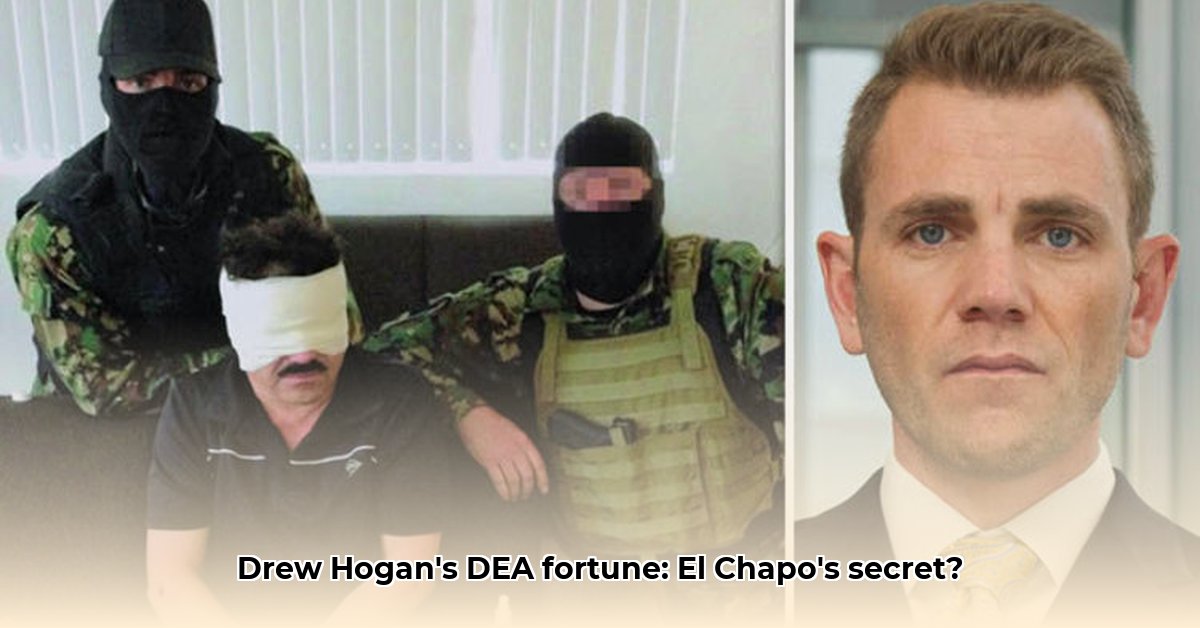
The El Chapo Saga: A DEA Agent's Untold Story
Joaquín "El Chapo" Guzmán, the notorious leader of the Sinaloa Cartel, captivated the world with his audacious escapes and reign as one of history's most powerful drug lords. His story, however, is incomplete without acknowledging the dedicated individuals within law enforcement who relentlessly pursued him. This article focuses on the pivotal role played by DEA Agent Drew Hogan, a figure whose contributions to El Chapo's capture and the subsequent analysis of his escape remain largely unacknowledged, yet are demonstrably significant. While the specifics of Agent Hogan's financial status are unavailable, the true measure of his impact lies in his contributions to this crucial case study.
The Capture: A Symphony of Intelligence and Strategy
El Chapo's initial capture wasn't a matter of luck; it was the culmination of years of painstaking intelligence gathering, international cooperation, and meticulous tactical planning. Agent Hogan's role, though classified, is understood to have been critical. Reports suggest his expertise in piecing together fragmented intelligence, coupled with his keen analytical skills, proved invaluable in building a comprehensive picture of El Chapo's operations and movements. This understanding wasn't limited to simply locating El Chapo; it encompassed a deep comprehension of the cartel's internal workings, key players, and potential responses to law enforcement actions. Isn't it remarkable how such intricate intelligence work can lead to the downfall of a powerful criminal network? This intricate web of intelligence, painstakingly woven together, ultimately led to a successful capture operation.
The Escape: A Critical Examination of Security Failures
Despite the initial success, El Chapo’s daring escape from the Altiplano maximum-security prison exposed significant flaws within the system. The meticulously engineered tunnel, a testament to the cartel's resources and planning, allowed El Chapo to vanish into the night. This escape wasn't just a personal triumph for El Chapo; it served as a glaring indictment of the security protocols in place. It sparked a critical reevaluation of security measures, prompting questions about intelligence failures, potential corruption, and the overall effectiveness of existing anti-narcotics strategies. While Agent Hogan’s specific reactions to the escape remain private, the event undoubtedly prompted a renewed focus on strengthening security measures and preventing future incidents. The escape underscored the fragility of even the most robust security systems, highlighting the ongoing arms race between law enforcement and sophisticated criminal organizations. How could such a sophisticated escape be possible, and what lessons can we learn from this failure?
Analysis: Lessons Learned and Future Implications
The El Chapo saga offers a valuable case study in the challenges of combating organized crime on a global scale. The operation, while successful in its initial capture, exposed crucial vulnerabilities in both intelligence gathering and prison security. The escape highlighted the necessity for enhanced cross-border collaboration, improved intelligence sharing, stronger anti-corruption protocols, and continuous adaptation to evolving criminal tactics.
This case study highlights three pivotal points:
- The importance of comprehensive risk assessments in handling high-profile prisoners.
- The need for continuous improvement in intelligence-gathering techniques and technological advancements to stay ahead of criminal innovations.
- The critical role of international cooperation and improved communication in tackling transnational organized crime.
The table below summarizes key lessons learned from different stakeholder perspectives:
| Stakeholder Group | Key Lessons Learned | Necessary Actions |
|---|---|---|
| International Law Enforcement Agencies | The need for enhanced intelligence sharing and improved cross-border collaborations. | Increased investment in advanced surveillance technology and improved personnel training. |
| Mexican Law Enforcement | The critical need for internal reforms to address corruption and strengthen internal security. | Implementing stricter vetting procedures for personnel and enhancing resource allocation towards intelligence gathering. |
| The Public | The pervasive nature of organized crime and the need for sustained public support. | Support for policies focused on addressing drug use root causes and greater transparency within law enforcement. |
Conclusion: The Enduring Impact of the El Chapo Case
While the precise details of Agent Hogan's net worth remain undisclosed, his contribution to the El Chapo case study remains undeniably significant. The case serves as a powerful reminder of the constant evolution of criminal tactics and the need for continuous adaptation within law enforcement strategies. The lessons drawn from this saga – encompassing intelligence gathering, security protocols, international cooperation, and technological advancements – will continue to shape the fight against organized crime for years to come. The ongoing research into Agent Hogan's role and the broader complexities of the El Chapo case are shaping current law enforcement strategies and improving our understanding of how to effectively combat transnational criminal networks worldwide.